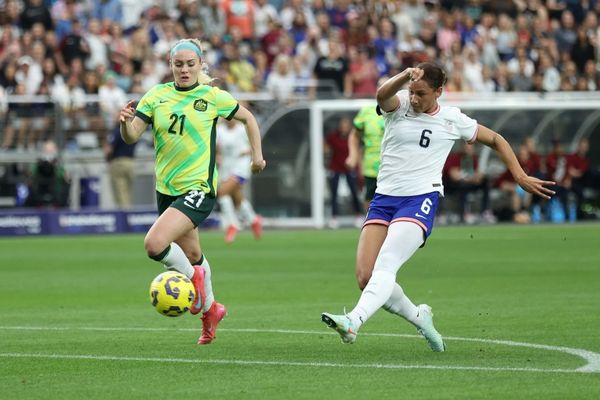
There are many distinct strands in the single tapestry of journalism. Among those that may spring most readily to mind are news, opinion, reviews, interviews and features long or short.
Sitting at the midpoint of these first two – between straight news and personal opinion – is analysis. Written most often by a newsroom journalist who is a specialist in their subject, these pieces are commissioned with the aim not of reporting the news but of explaining it. The change of prime minister in the UK this week has prompted a flurry.
But in the past fortnight, regular visitors to the Guardian’s website may have noticed such articles have a striking new design and clear labelling. The change stems from reader feedback – or more accurately from reader misunderstanding. Here’s why.
Analysis has many stripes of its own but typically it looks behind an event or issue, providing insight and interpretation; it is a textured assessment and one that may also draw conclusions. Analysis has voice, but it is not generally a voice raised to chide or cheer. It is an “authored” article but not a polemic, as one editor puts it.
Not so long ago, digital readers had largely to intuit that they were looking at this kind of journalism from the written tone. Otherwise, it appeared on the same template as news stories – the only distinction being a thin rule below the decks of headline, reflecting a design feature in print which was, as signals go, a subtle one.
Tone, it should be said, is generally considered a reliable guide to content; writing doesn’t always need a label to announce itself, if language, style and construction make the proposition clear. Some might think of it as the “duck test”.
But just because something can be inferred does not mean it can’t be made explicit. The busy reader, the new reader, or the reader who has alighted on a piece from some other part of the web, then has no need to pause to deduce whether the duck is actually some other kind of bird. There is, after all, no moment of ambiguity in the printed newspaper, where analysis sits as a clearly labelled and distinctively styled companion to the adjacent news.
Analysis, and its close cousin the “explainer”, which really came to the fore during the Covid pandemic, matter more than ever for making sense of the world at a time of crisis and uncertainty, and both have been especially indispensable during the war in Ukraine.
In its Digital News Report 2022, the Reuters Institute for the Study of Journalism suggested the media needed to do more explainers and Q&As, especially for younger readers who may access news “in more fragmented ways, meaning that people sometimes miss key context that was previously carefully packaged into linear narratives by the mainstream media”.
But sometimes analysis and explainers have brought questions rather than answers, with readers surprised to find someone they know to be a “reporter” offering evaluation or characterisation, or not making “any attempt to get a government response”.
In November 2020, I passed on the following feedback to senior editors: “The readers’ editor’s office seems to be dealing with an increasing number of complaints over analysis articles that are presented – as far as the reader is concerned – as news. I don’t know if the number of these pieces is increasing as a proportion of the mix, or if there is just increased reader sensitivity to it.”
Editors recognised the problem and, as a holding measure, decided to preface article standfirsts (sub-headings) with “Analysis”. This was simple and effective (although it relied on someone remembering to add the word manually) but intended only as a temporary fix.
Now a full redesign has taken place, borrowing elements from the two pillars between which analysis stands. Like the opinion pages, these pieces are differentiated from news by a tinted background – in this case pale pink – and carry the author’s byline in large italic font. But they retain the signposting colours of the section to which they relate, eg red for news, blue for sport and so on. Most importantly they – and explainers – are prominently labelled. The change applies retrospectively, so – in candour – you may find old articles that have the presentational clarity they lacked originally.
Owen Gibson, the Guardian’s deputy editor, who oversaw these changes, regards analysis as one of the newspaper’s “great strengths”.
“We know our readers value the lightly worn expertise and insight that our trusted specialists and reporters can provide. Amid a fast-moving news cycle of complex issues that increasingly bleed into one another, the ability to pause and make sense of them for our readers is even more important,” he said. “But in a digital, disaggregated world, we were in danger of turning a positive into a negative by failing to frame them clearly enough so that readers know what to expect. Hopefully these changes address that, as part of a wider effort to innovate in the way that we project and present our digital journalism with different designs and formats.”
To my mind the designers have deftly signalled analysis journalism so that it is now not only distinguishable at first glance from what it isn’t, but has a positive identity of its own. It is your view that matters, though, and your feedback is always welcome.
Slideshow captions
Another remedy to a regular complaint deserves mention here. Readers often told us they were bothered by the absence of picture captions in the “slideshows” sometimes seen on the front of the website – those that scroll above and accompany the live blog or other major news stories. We took their part but explained it was a technical constraint.
But after Russia invaded Ukraine there was a spike in concern about images from a war zone needing context. One reader emailed on 28 February: “I see today a photo of uniformed personnel pointing a rifle at a person laying face-down on the ground, arms splayed … are the uniformed personnel Russians? Ukrainians? Is the person on the ground a Ukrainian? I have no idea what I am seeing … the photos incite some sort of vague emotion, but we don’t know how to interpret what we are seeing.”
The necessary development work was carried out in early March and, since then, there should be no photos without captions on the slide carousels, or indeed on any article page.
Elisabeth Ribbans is the Guardian and Observer’s global readers’ editor. She can be contacted at this email address
Do you have an opinion on the issues raised in this article? If you would like to submit a letter of up to 300 words to be considered for publication, email it to us at guardian.letters@theguardian.com







